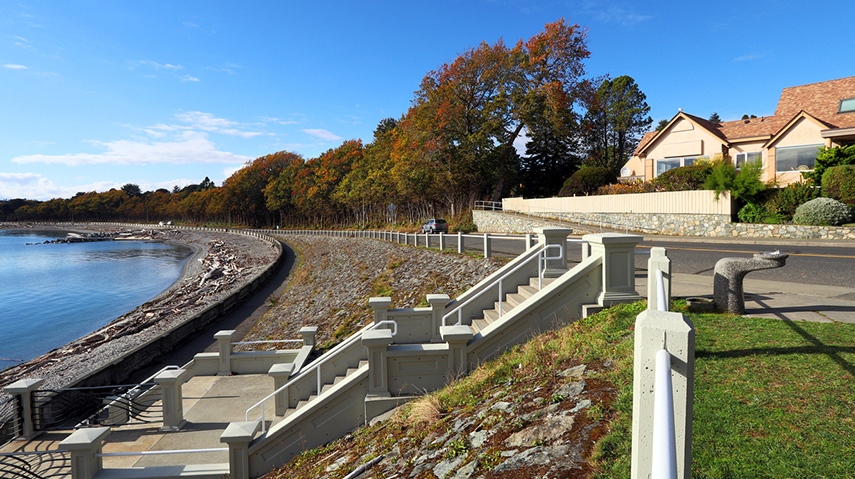Benchmark prices remain robust as market cooldown slows, ‘illustrating stability,’ says board
Joannah Connolly
REW
Victoria homes sales continued to fall year-over-year in October, but at a slower rate of decline, indicating the market cooldown may be levelling off.
There were 664 real estate sales in Greater Victoria in October, of which 633 were residential properties, according to Victoria Real Estate Board (VREB) statistics released November 1.
That’s a slide in home sales of 10.5% compared with October 2016, but 4.6% higher than September’s residential sales. This monthly increase comes after several consecutive month-over-month home sales declines, as the fall market warmed up somewhat.
Just like in the previous three months, Victoria home sales in October were lower than those of the past two Octobers, but higher than those of the previous four years on the same month.
VREB president Ara Balabanian said, “As expected, we saw fewer sales than this time last year. Looking at the longer-term picture, however, sales last month were 17.1% above the 10-year average of 567 properties [all property types] for the month of October, so the market is still very active here in Victoria, and this is in spite of the ongoing low inventory levels.”
Some 1,905 properties were available for sale on the VREB Multiple Listing Service® as of the end of October. That’s a drop of 3.6% compared with September’s 1,976 and 1.7% fewer than the 1,938 active listings at the end of October 2016, said the board.
Benchmark prices also started to recover, with two of three key home types rising in price month over month, and all home types priced markedly higher than one year previously.
Balabanian said, “The fact that we’ve seen such a controlled levelling-off in the market directly following a year which felt so uncontrollable in terms of demand and pressure on prices illustrates the depth and stability of the Victoria market. An unstable market may have experienced a heavy correction or shift, whereas in our market sales are moderating at a reasonable rate.”
Home Type Breakdown
Having performed worst over the past few months, the month-over-month increase in home sales was led by a recovery in single-family detached transactions. The 339 sales was an 8% rise compared with September. However, this property type still saw the biggest year-over-year decline of the three key home types, at 15.5% lower than October last year.
Townhomes and other similar attached properties saw an even bigger monthly rise in sales, although they had less effect as a smaller segment of the market, and are much more subject to larger percentage swings. There were 70 townhouse sales in October – up 22.8% over September’s dip, and 11.4% lower than October 2016.
Condos were the only one of the three key home types to see a drop in sales, having performed very well in September. The 213 condo transactions in the region in October was slightly lower than September’s, down 0.5%. However this figure was only 0.9% lower than in October last year.
The benchmark price of a single-family home in Greater Victoria fell again compared with the previous month, but only very slightly, down 0.4% to $690,000. This is 11.3% higher than in October last year ($619,700).
Buyers looking for smaller units have stiff competition, leading to prices increasing. The price of a typical Greater Victoria townhome now stands at $562,000, a rise of 14.9% year over year and 1.2% higher than in September.
And yet again condos saw the biggest yearly price growth, with the new benchmark price of $437,800 a 19.6% annual rise. This is exactly $1,000 – or 0.2% – higher than September’s typical price.
Balabanian added, “In the coming months we expect to see less inventory on the market, because the year-end changes buyer and seller behaviours, their focus shifts to holidays and winter weather. One unknown influence that may play on the winter market is the upcoming mortgage stress test. Some buyers may move their purchasing timelines forward to make their home purchases before the stress test on uninsured buyers becomes required January 1.”
© 2017 REW.ca


